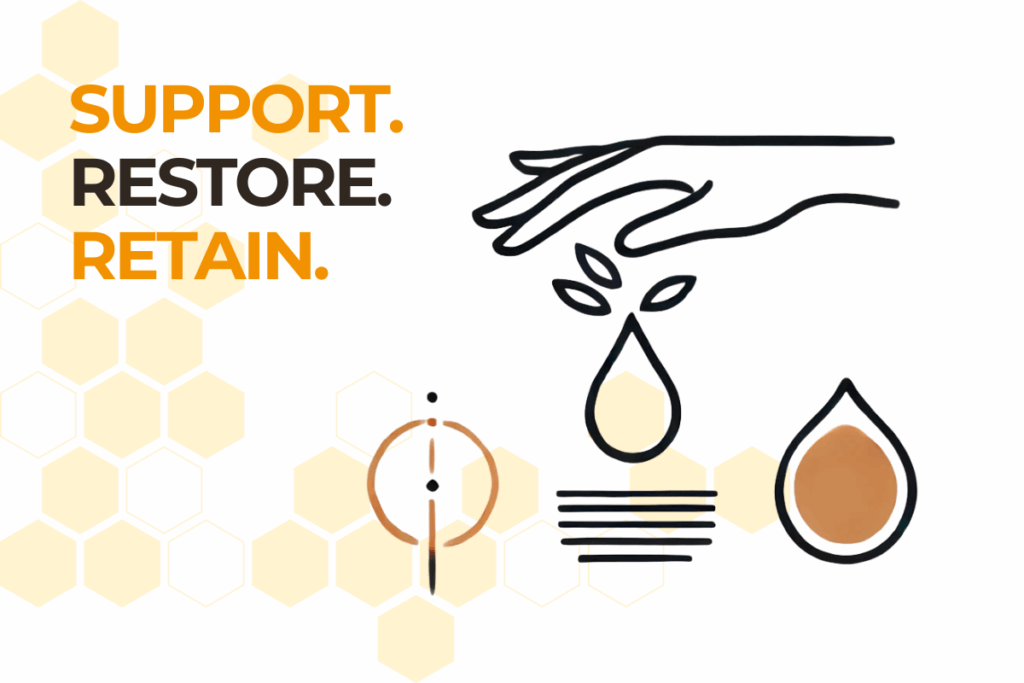The Hidden Crisis: Why Therapist Burnout Hurts Your Business
Staff burnout in massage therapy clinics is a serious issue that affects therapist well-being, client satisfaction, and the overall success of a clinic. The combination of physical strain, emotional fatigue, and demanding schedules makes burnout a common challenge in the industry. Research shows that over 50% of massage therapists leave the field within five years, often due to exhaustion, repetitive strain injuries, and lack of support. This high turnover not only disrupts business operations but also impacts client relationships and the reputation of the clinic.
When therapists are overworked and under-supported, the quality of care declines, leading to dissatisfied clients and a stressful work environment. Clinic owners who don’t take steps to prevent burnout may find themselves constantly hiring and training new staff, which is costly and time-consuming. By recognizing the warning signs early and creating a workplace that prioritizes therapist health and job satisfaction, you can prevent these issues before they escalate.
This article breaks down the main causes of staff burnout in massage therapy clinics and offers real, effective solutions to help prevent it. From better scheduling practices to physical self-care and emotional support, these strategies will help you retain skilled therapists, improve workplace morale, and create a thriving, sustainable business.

Identifying the Causes of Staff Burnout
Overloaded Schedules and Client Fatigue
Many massage therapists feel pressured to book as many sessions as possible to maintain a steady income. However, excessive client loads without sufficient recovery time lead to chronic fatigue and decreased performance. When therapists are overworked, their ability to provide high-quality treatments diminishes, resulting in dissatisfied clients and increased turnover rates.
The Solution: Implement Balanced Scheduling
- Enforce mandatory breaks between sessions.
- Limit daily appointments to a sustainable number.
- Rotate therapists to prevent overuse injuries.
- Use Hivemanager to automate scheduling and ensure fair workload distribution.
Physical Strain and Repetitive Injuries
Staff burnout in massage therapy clinics is often caused by physical strain. Massage therapy is physically demanding, often leading to musculoskeletal injuries in the hands, wrists, shoulders, and back. Without proper body mechanics and self-care routines, therapists are at risk of career-ending injuries.
The Solution: Encourage Preventative Care
- Provide ongoing training in ergonomics and injury prevention.
- Offer on-site stretching or yoga sessions for therapists.
- Educate staff on using alternative massage techniques to reduce strain.
Emotional Exhaustion and Compassion Fatigue
Massage therapists often work with clients who are in pain or experiencing emotional distress. Over time, absorbing these emotions can lead to compassion fatigue and emotional burnout.
The Solution: Create Emotional Support Systems
- Foster open communication between staff and management.
- Offer professional development in stress management.
- Provide access to counseling or peer support groups.
Lack of Career Growth Opportunities
Staff burnout in massage therapy clinics is also driven by the lack of career advancement. Many therapists leave the industry due to stagnation and limited opportunities for professional development.
The Solution: Invest in Professional Growth
- Provide advanced training and specialization courses.
- Offer mentorship programs for career development.
- Encourage therapists to diversify their skills with additional certifications.
Building a Workplace Culture That Prevents Burnout
Fostering a Positive Work Environment
A workplace culture that prioritizes staff well-being reduces burnout and improves job satisfaction. This includes recognizing employee efforts, maintaining fair policies, and ensuring a healthy work-life balance.
The Solution: Prioritize Therapist Well-Being
- Recognize and reward hard work with incentives.
- Promote transparency and fairness in management decisions.
- Establish an open-door policy where therapists feel heard and valued.
Supporting Work-Life Balance
Many therapists struggle with maintaining personal time due to irregular schedules and evening/weekend shifts. Over time, this imbalance leads to resentment and exhaustion.
The Solution: Implement Work-Life Balance Strategies
- Offer flexible scheduling options where possible.
- Provide guaranteed time off to prevent burnout.
- Encourage therapists to set clear boundaries with clients.

Practical Strategies to Reduce Turnover and Increase Retention
Implementing Smart Scheduling Software
Using an automated scheduling system like Hivemanager can help clinic owners create balanced workloads, prevent overbooking, and ensure that therapists receive adequate rest. Preventing staff burnout in massage therapy clinics starts with efficient scheduling and workload management.
Offering Employee Wellness Programs
Investing in therapist wellness programs can drastically reduce burnout rates. Consider offering:
- Monthly self-care stipends for therapists to receive massages.
- Access to fitness or meditation programs.
- Regular team-building activities to reduce workplace stress.
Encouraging Peer Support and Mentorship
Creating a strong sense of community within your clinic helps therapists feel valued and supported. Establish peer mentorship programs where experienced therapists can guide new hires, providing them with professional and emotional support.
Moving Forward: Ensuring Long-Term Therapist Retention
Staff burnout in massage therapy clinics doesn’t just affect individual therapists—it impacts the entire business. Preventing therapist burnout is not just about reducing stress; it’s about fostering a culture where therapists feel supported, valued, and motivated to stay in the profession. By addressing key causes of burnout, implementing proactive strategies, and utilizing tools like Hivemanager for scheduling efficiency, clinic owners can create a thriving work environment that benefits both therapists and clients alike.
FAQs
Signs of burnout include chronic fatigue, disengagement from work, frequent absenteeism, increased irritability, and decreased treatment quality. Regular check-ins with your team can help you identify burnout early.
The ideal number varies, but most experts recommend limiting appointments to 4-6 per day, with adequate breaks in between. Overbooking increases the risk of injury and emotional exhaustion.
Efficiency is key. Use scheduling software like Hivemanager to balance workloads, optimize appointment slots, and prevent overbooking. Investing in therapist well-being leads to long-term profitability by reducing turnover and maintaining client satisfaction.
Encourage open communication, offer stress management resources, and foster a supportive work culture. Consider implementing peer support groups or access to professional counseling services.
By taking proactive steps to reduce staff burnout in massage therapy clinics, clinic owners can create a sustainable and thriving work environment for their teams.


